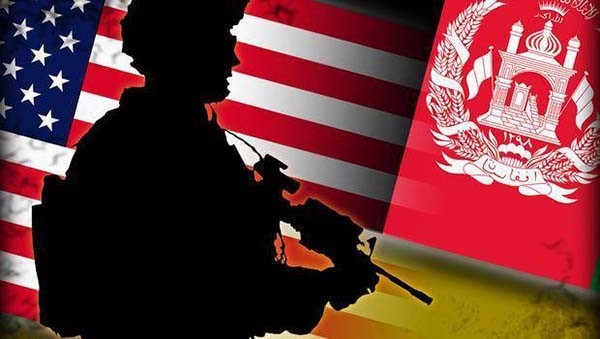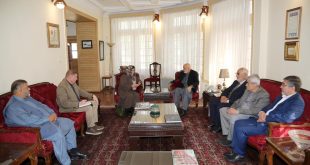AT Monitoring Desk-KABUL: As the Islamic State evil tentacles spread to different parts of Afghanistan and the Taliban have unleashed a new wave of violence, the United States’ President Barack Obama has approved broader role for the US forces in the war-hit country to help the local forces in the fight against extremism and terrorism.
After surge in the militant attacks in the country, the White House sought advice of military strategists and generals to deal with the situation in Afghanistan. Obama and his security team paid serious attention to Afghanistan’s security situation and capabilities of the local forces after the Taliban captured the Kunduz City in late September 2015.
According to the new plan, the US commander in Afghanistan can increase and authorize airstrikes against the Taliban insurgents—providing more flexibility to the US forces how to support their Afghan friends on the ground. However, the plan does involve the US ground troops in the country.
The plan enables the US commander in Afghanistan, Gen. John Nicholson, to decide when it is appropriate for US troops to support the conventional Afghan forces into the battlefield against the insurgents. Before, the US troops were accompanying only the Afghan Special Forces in the operations.
“This added flexibility … is fully supported by the Afghan government and will help the Afghans at an important moment for the country,” Reuters quoted a US official as saying.
The US officials believe that the new plan would help the Afghan security forces to avoid casualties as the US Air Force would provide close air support to the Afghan troops.
Scores of Afghan leaders including the ex-president Hamid Karzai have criticized the US government for killing civilians in the airstrikes.
Showing reaction to the US drone strike that targeted civilians in Paktika in the first week of April this year, Karzai said that such attacks would result strong reactions of Afghans. Karzai expresses concerns over civilian casualties, and strongly condemns the US drone strike on Barmal district that left a number of civilians killed and injured.
Therefore, it is believed that the Afghan government and the US forces would lose support of local population if the airstrikes or ground troops targeted the civilians.
The United Nations Assistance Mission in Afghanistan (UNAMA) in its 2015 annual report recorded 11,002 civilian casualties including 3,545 deaths and 7,457 injured, the highest record since 2009.
Ground engagements between parties to the conflict caused the highest number of total civilian casualties, followed by improvised explosive devices and suicide and complex attacks, causing the most fatalities amongst civilians, followed by targeted and deliberate killings, the report said.
Anti-Government elements continued to cause the most harm – 62 per cent of all civilian casualties – despite a 10 per cent reduction from 2014 in the total civilian casualties resulting from their attacks. Notwithstanding the overall decrease, the report documents anti-government elements increasing use of some tactics that deliberately or indiscriminately cause civilian harm, including targeted killings of civilians, complex and suicide attacks, as well as indiscriminate and illegal pressure-plate IEDs. In addition this reduction of Anti-Government Elements caused casualties must be considered in the light of the increase in unattributed casualties.
Civilian deaths and injuries caused by Pro-Government Forces caused 17 per cent of civilian casualties – 14 per cent from Afghan security forces, two per cent from international military forces, and one per cent from pro-Government armed groups. The report documents increased civilian casualties caused by Pro-Government Forces, including during ground engagements, aerial operations, and the activities of pro-Government armed groups.
Fighting between the parties to the conflict, which could not be attributed to one specific party, caused 17 per cent of civilian casualties. Unattributed explosive remnants of war caused four per cent and cross-border shelling from Pakistan into Afghanistan caused less than half of one per cent.
Ground engagements between parties to the conflict caused 4,137 civilian casualties (1,116 deaths and 3,021 injured) – a 15 per cent increase from 2014 – and the leading cause of civilian casualties in Afghanistan. Improvised explosive devices caused 2,368 civilian casualties (713 deaths and 1,655 injured). While this represents a 20 per cent decrease it is still the second leading cause of civilian casualties in Afghanistan.
The latest figures show an overall increase of four per cent during 2015 in total civilian casualties comparing to the previous year. Complex attacks in Kabul and other cities and attack on Kunduz were called as the main factors of the casualties. UNAMA finding showed that in 2015, UNAMA documented a 37 per cent increase in women’s casualties while the casualties of children had a 14 per cent increase.
The report shows that increased ground fighting in and around populated areas, along with suicide and other attacks in major cities, were the main causes of conflict-related civilian casualties in 2015.
 Afghanistan Times
Afghanistan Times




